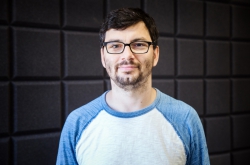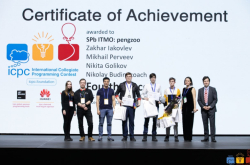Created only a year ago, the game-based platform for testing IT specialists Skillotron has quickly gained popularity in the IT professional community, attracting more than 11,500 users from 65 countries all over the globe. The platform gives programmers a unique opportunity to boost their skills in several IT areas ranging from programming languages to project management techniques and computer science history at the same time, all in the exciting game format. The authors of the platform, the DataArt company developers, endowed the service with several distinctive features, one of which is giving users the ability to generate content themselves. Despite the fact that the initial test questions were drafted by DataArt tech experts, users are able to not only voice criticisms and propose changes to questions they don’t like, but can also create their own tasks. According to the DataArt vice-president Daniel Lourie, this option has changed the platform for the better: with the introduction of user-suggested modules such as geek culture and science in IT, the number of sections increased from 16 to 20, while the general number of questions rose more than twofold, from 1,000 to 2,500.
“We get lots of tasks-related comments on a daily basis, and this allows us to not only create new questions, but also improve the existing ones. It also helps us better evaluate the difficulty of the tasks, which has crucial implications for the quality of users’ Skillotron experience as questions become more and more difficult with each level of the game. Users also approach us with suggestions on creating new platform options, thanks to which we’re constantly working on expanding Skillotron’s functionality. We try to reward active users by regularly hosting contests for best questions in different categories. In the nearest future we plan on introducing the option of identifying best Skillotron players from different cities, including St. Petersburg. DataArt isn’t a product-oriented company, Skillotron is just our favorite hobby; that’s why we’re not developing it as fast as we could have done otherwise. But we are still doing a lot of work on creating new types of questions, as well as on giving our partners more opportunities for holding contests on our platform,” explained Daniel Lourie.

The company representatives decided to analyze Skillotron users’ activity on the platform after a year of its operation in order to find out what features are characteristic of developens in the countries where Skillotron became popular. As it turned out, Russian programmers solve tasks faster than players from other countries. Besides, Russian IT specialists are almost always ready to share their knowledge and take part in open source projects. According to Skillotron’s data, an average Russian programmer needs up to 41 seconds to solve ten tasks, which is 12% less than the world average. For reference, in Bulgaria, it’s 51 seconds, while in Poland it’s 49. On average, Russian programmers spent as much time playing as their foreign colleagues with one session lasting about six minutes.
What is also interesting is that most Russian players are ready to contribute to the development of the IT professional community: every sixth player from Russia came up with at least one question for their colleagues. Only Ukrainian programmers showed better results: every second Ukrainian player created a question.
In some aspects, the results obtained by Russian developers can be compared to those of players from other counties. For example, the most popular sections among Russians include JavaScript, Net (C#), Java, QA, and Python (in descending order of popularity), which coincides with the top-5 most popular sections among players from all over the world. The average number of levels Russian players completed is six, which is just a little bit higher than in other countries (5.5).

Just like in the rest of the world, most developers in Russia are men aged between 25 and 34 (more than 67% of all programmers). At the same time, the amount of women playing Skillotron in Russia is slightly lower than in most other countries: only 13%, while the world average is about 15.4%. Experts also found out that in some countries there are more women playing Skillotron: for example, 23% in Poland, and 22% in Bulgaria. Women make up about 17% of all programmers in Belarus and Ukraine, and about 16% in the USA.
On the Programmer’s Day itself, the platform developers have launched a new Science in IT section consisting of questions on IT history and theory. As was with other sections, so far this newly-created module only has tasks devised by DataArt experts, but in the future it will expand to include questions suggested by community members.





